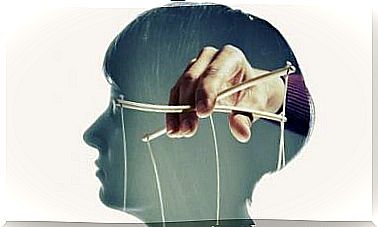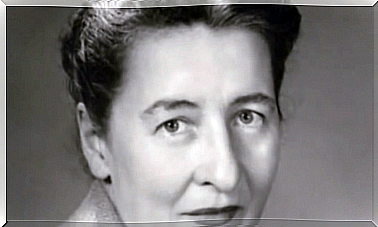How To Understand An Insecure Child

One of the most acclaimed and talented writers and poets this world has ever seen, Pablo Neruda, said that ” everything is a ceremony in the overgrown garden of childhood.” In the wake of such an obvious reality, how is it possible that so many parents and educators do not know how to understand an insecure child?
It is important not to forget that an insecure child, in addition to its own genetic inheritance, is defined by experiences. Those who have experienced childhood suffering and have not been properly handled, understood or recognized.
What creates insecurity in a child?
An insecure child can have many different experiences that can produce certain conditions such as sadness and anxiety. But there can also be more serious, pathological conditions, such as social isolation, depression, or guilt. This happens if these conditions are not perceived and treated in time.
A traumatic episode can be the reason behind a young person’s insecurity. The reasons can vary, such as the death of a pet, experiences in children’s institutions or within the family. It can even be provoked by a move.

We should never forget that routine is the root of the sense of security for children. Stability in their first year of life is necessary. Therefore, parents, teachers and educators need to be understanding and empathetic in these situations. They must recognize the importance of stability for the child.
To discover an insecure child
The sooner we see a child struggling with insecurity, the easier it is to examine that insecurity, send it in a new direction, and even deal with it.
Therefore, it is important to look for a number of symptoms:
- Problems with emotional adjustments. If one observes emotional instability , aggression, a shy attitude or even an excessive need or demand for care and attention, then it can be a symptom of insecurity.
- Changes in personal hygiene. If they are overly dependent on their parents to maintain their hygiene, then it may be inappropriate and symptomatic behavior.
- Insufficient motor development. The child’s motor skills may be developed in an inadequate way. It can show up as problems when walking, in their fine motor skills when drawing, etc.

- Changes in health and sleep. A balanced diet and sleep are basic parts of any child’s development. If they have trouble falling asleep, get easily upset, have nightmares, lose appetite, have excessive vomiting or are unable to use cutlery, this may be a sign.
- Flighty behavior and impaired mental abilities. Flighty behaviors such as major changes in their behavior during play or an inferior mental ability can demonstrate a pattern of insecurity.
- Lonely social behavior. A child who exhibits excessive delays in communicative abilities or is overdramatic may be developing insecurity.
To understand the insecure child
Once we have made the diagnosis and we have discovered uncertainty in a child, then it is time to understand them and be able to change their direction little by little.
The first step is to remain calm. Children get a huge amount of stimuli through childhood and can go through various stages of insecurity. We should keep in mind that their physical and psychological abilities are in the middle of the development process. Therefore, it need not be cause for alarm unless it continues for a very long time.

Empathy will be one’s greatest ally when it comes to understanding an insecure child. When it comes to their communication problems, we should be very caring and compassionate. Try to remember how you were at their age, what scared you, what you liked, did not like, how you saw the world…
A specialist in child psychology will be a great source of support during that time. They know more than anyone else about dealing with an insecure child, and about what to do. So they can act as a guide when it comes to being more understanding and empathetic.
Clearly, we need to keep an eye on the child’s behavior. It is important to find out what stimuli and situations are creating their insecurity. Whether it is at home or at school. This way you can turn the situation around so that the child will have a more appropriate routine.
To help a child get rid of insecurity
Finally, I want to emphasize that caring is very, very important for insecure children. That they know they are loved. That they are cared for by the people around them. That these people understand them and give them this calm, routine environment is an essential part of their healing.
As you can see, it does not have to be impossible to understand a child who suffers from insecurity.
You need to arm yourself with patience, care and empathy. Work to ensure that the problem does not continue and get worse.









